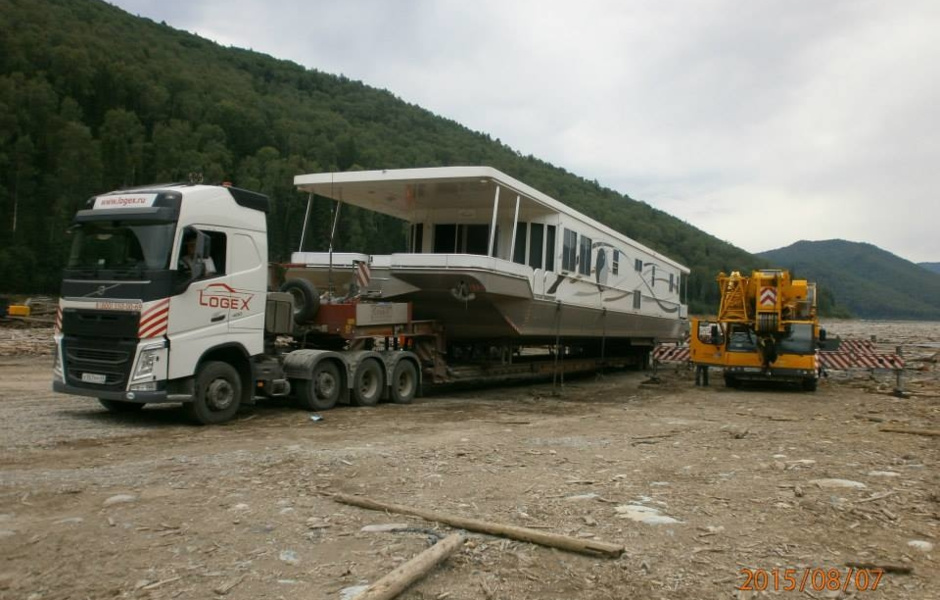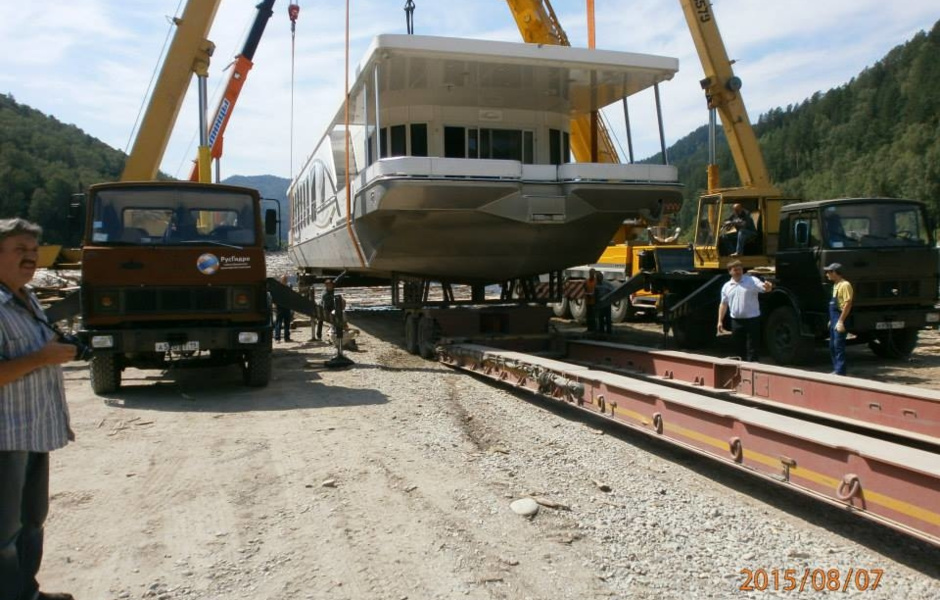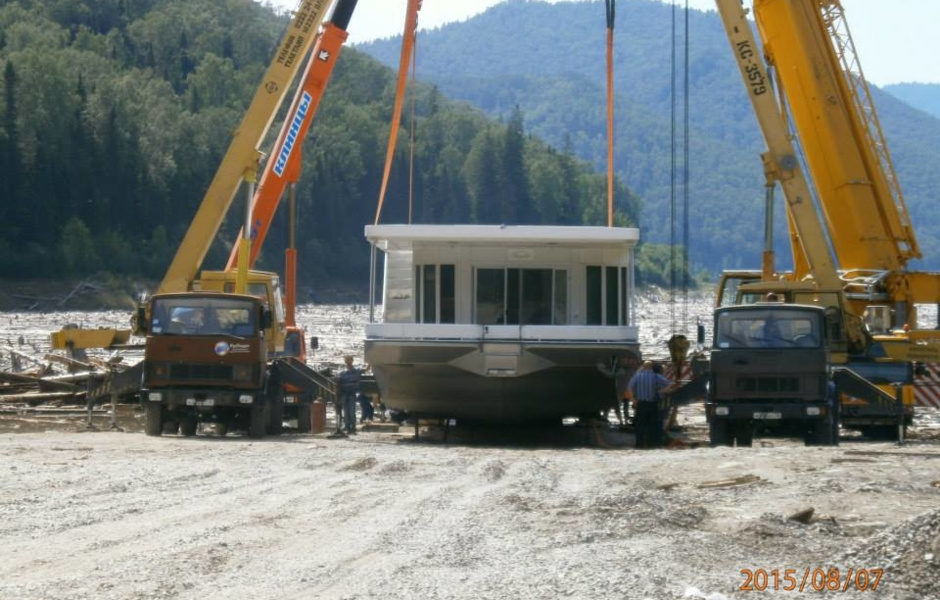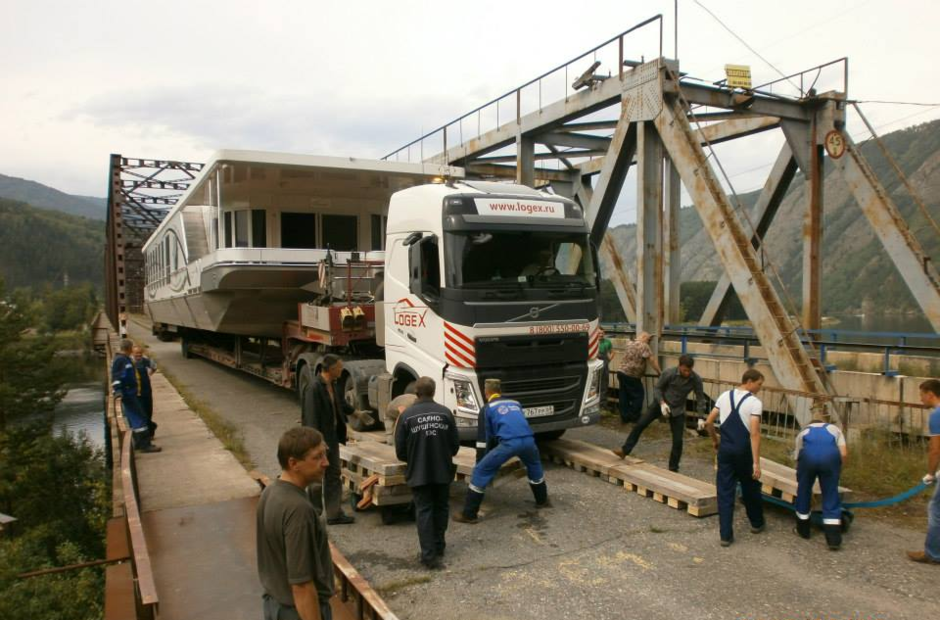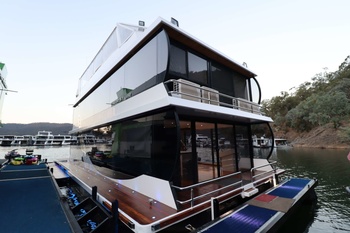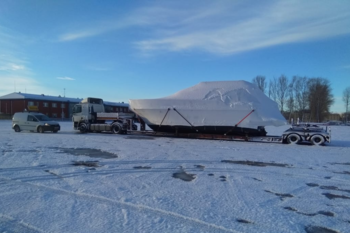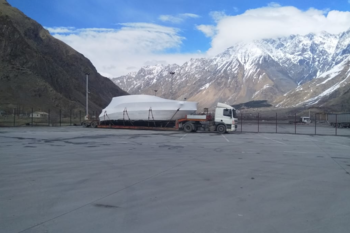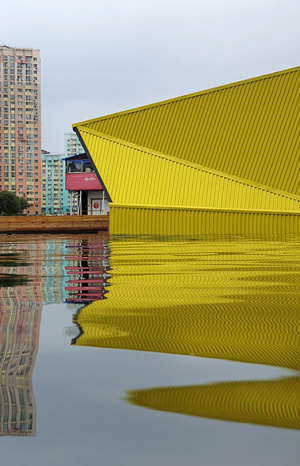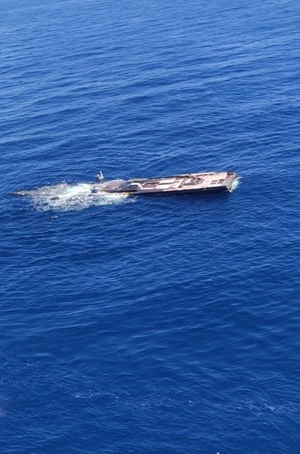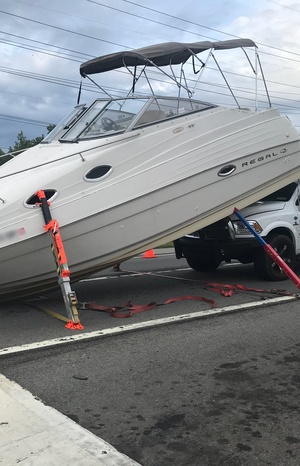»Artem Rozhkov, the founder of the company «Exclusive Logistics, tells in another material of his author's column how his company solved the non-trivial task of transporting the 35-meter long
In 2015, we ordered the transportation of the houseboat from Saratov to Sayanogorsk, to the Sayano-Shushenskoe
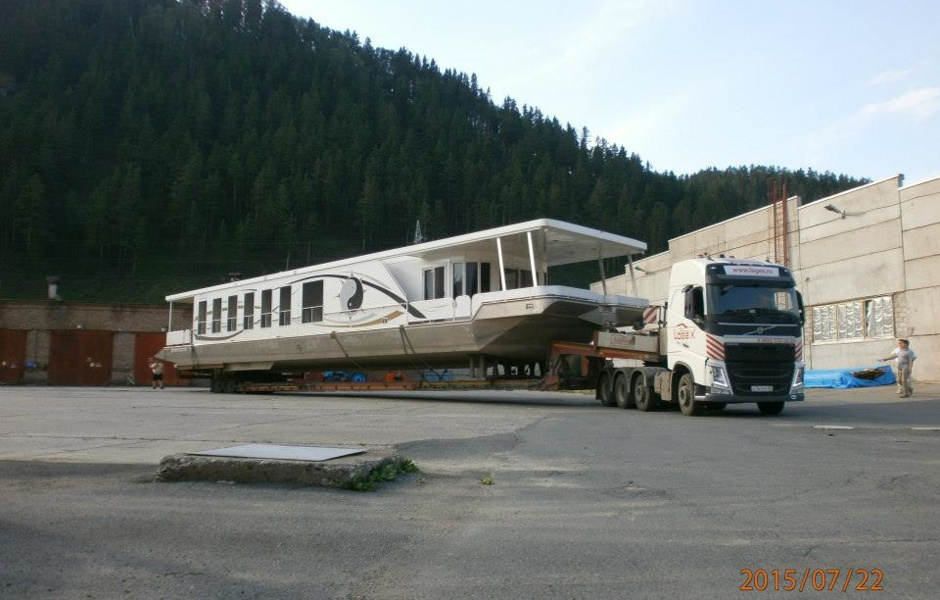
For successful cargo transportation, several tasks had to be solved at the preparation stage:
- Coordinate the route of transportation with road owners on the way and with the traffic police.
- Solve the engineering problem of placing the cargo on the road train
- To develop a travel project directly to the reservoir and the place of unloading on the territory of the consignee.
- Help with organizing the watering of the houseboat.
With the alignment of the route, it was
The shipper took the responsibility for the placement of the cargo on the road train, as we did not fully understand the power structure of the houseboat, the possible places of installation of kilblocks and strapping.
The most interesting task was to organize the passage on the territory of the consignee.
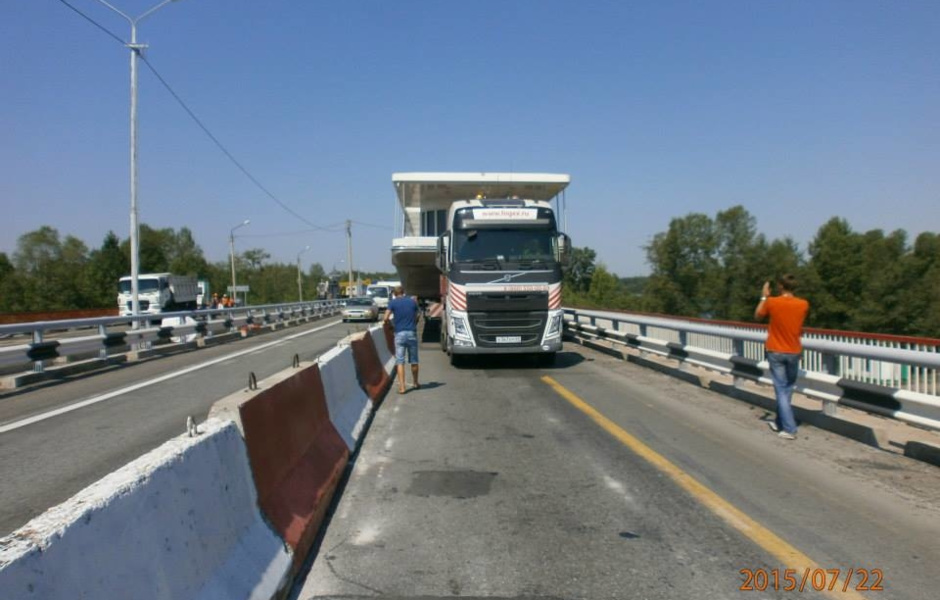
Obstacle number one: the bridge is too narrow.
Unloading was planned at the site near the reservoir, upstream from the Sayano-Shushenskaya
A 40 cm high monolithic kerb was made along the whole bridge in the middle. It divided the bridge in about half on the axis and made it impossible to pass with wide loads.
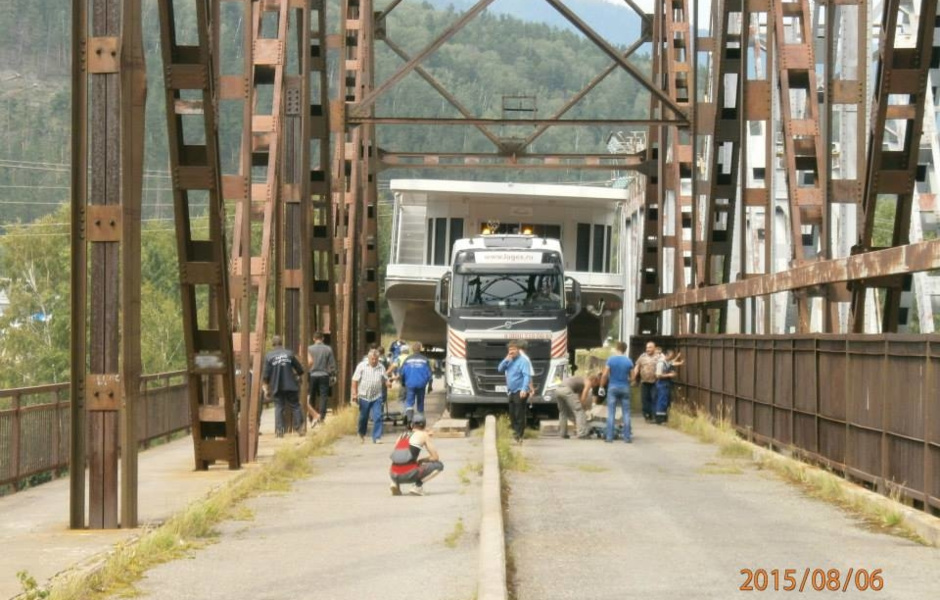
Initially, the customer offered to unload the Hausbot on one side of the river and cross it on the other. The empty road train had to pass over the bridge at that time. Then the Hausbot had to be loaded onto the car again and overcome the rest of the road. The strong current and the lack of a normal quay wall made this idea almost impossible to implement. It was also thought to dismantle the reinforced concrete curb on the bridge, but it was built back in the Soviet era, was a single structure with the bridge canvas, was reinforced, so that the dismantling was not an easy task.
Then we came up with the idea to drive over the bridge, letting the kerb on the axis of the road train between the wheels, and traffic on a wooden deck that raises the road train to the necessary height.
In fact, it looked like this. There were made wooden platforms, 4 of them under each side of the tractor. As the road train progressed, several people moved the rear axles forward. It should be noted that the Faymonville Megamax semi-trailer with hydraulic suspension was used for this transportation. Therefore, he did not need any additional equipment - the driver simply put the transport position of the semitrailer 40 cm higher than usual, and the automatics did its job.
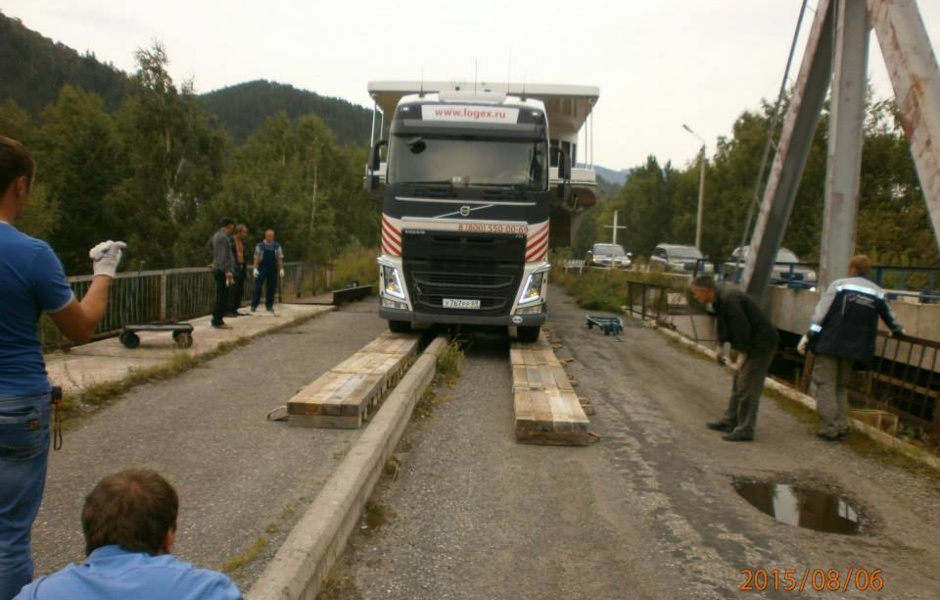
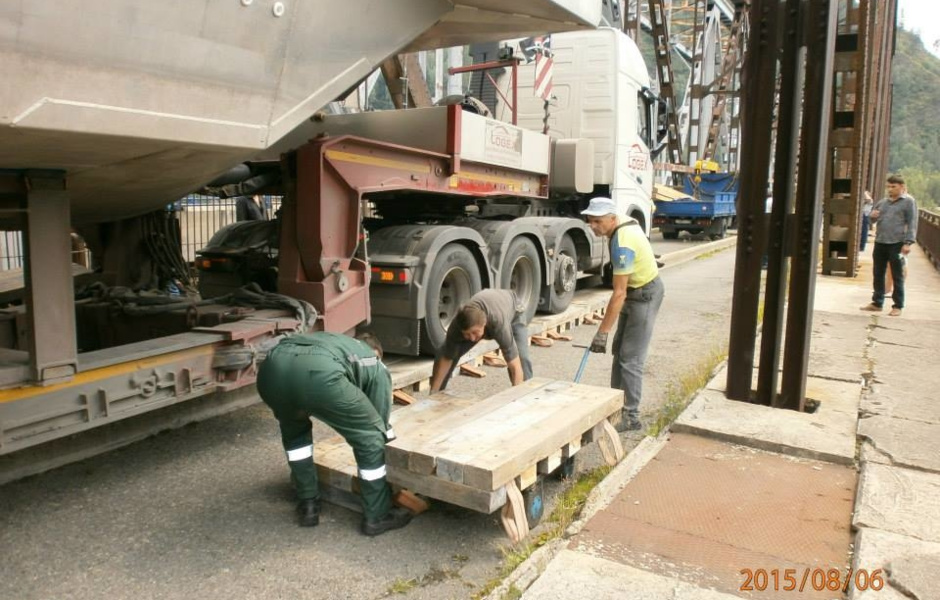
The speed of movement on the bridge with this technology was about 10 meters per hour. 100 meters of the bridge were overcome in 2 working shifts.
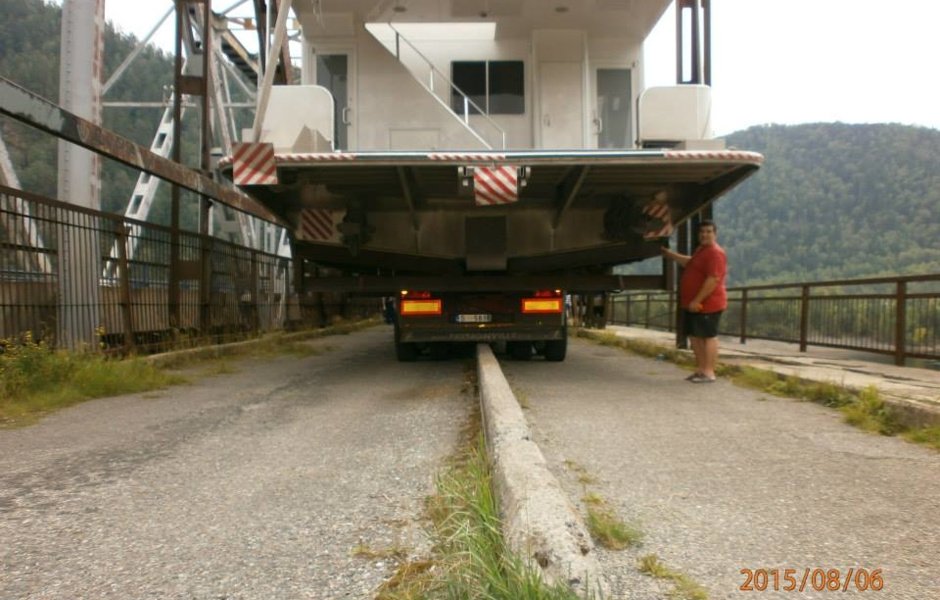
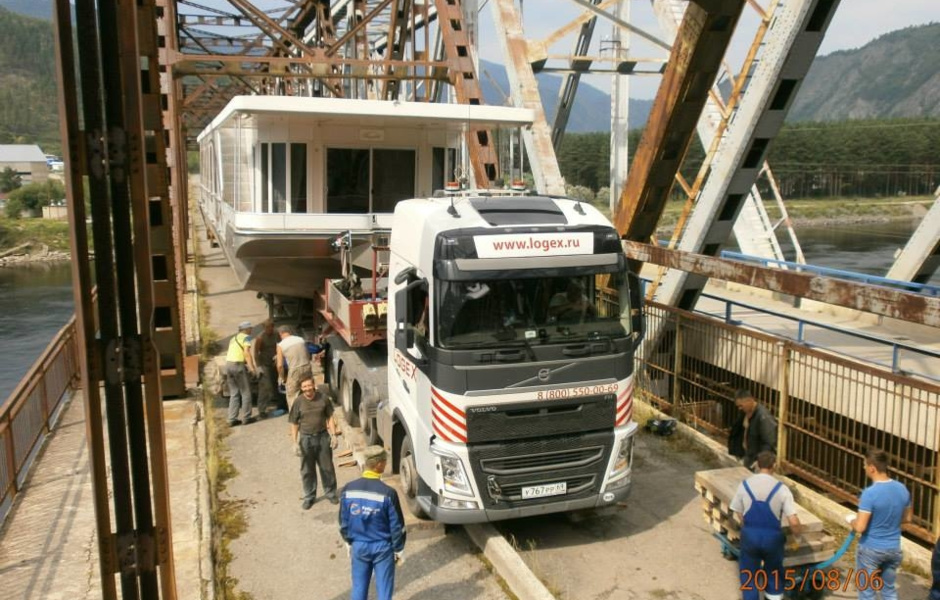
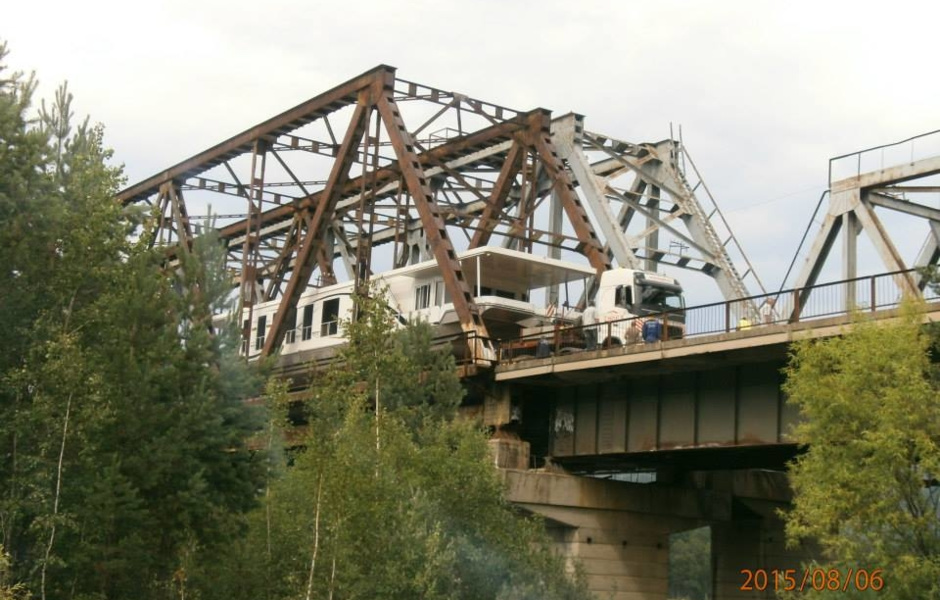
Obstacle number 2: ground serpentine
Then it was necessary to drive a few kilometers long dirt mountain serpentine, but with a large difference in height and slope of the road.
For the passage of the ground serpentine, the customer provided us with two sand loaded dump trucks. If necessary, they had to tow our road train, and the sand as a load added them to the clutch with the road.
For transportation, we used a new generation Volvo 8×4 truck tractor. Its pulling force was enough to overcome the serpentine without assistance.

Obstacle number 3: unloading in shallow water.
The unloading area was an ordinary bay with a gentle descent into the water. It was impossible to unload the Hausbot with the crane on a place with necessary depth - there was a lack of the boom departure. As the water level in a reservoir constantly varies, in coordination with the customer the following scheme of an unloading has been thought out. The motor train has arrived on a place when a level was minimum, a gulf - without water. Then, with the help of two cranes and hydraulic suspension of the Hausbot semi-trailer, it was mounted on wooden supports directly on the bottom of the bay, and the road train drove out from under it
